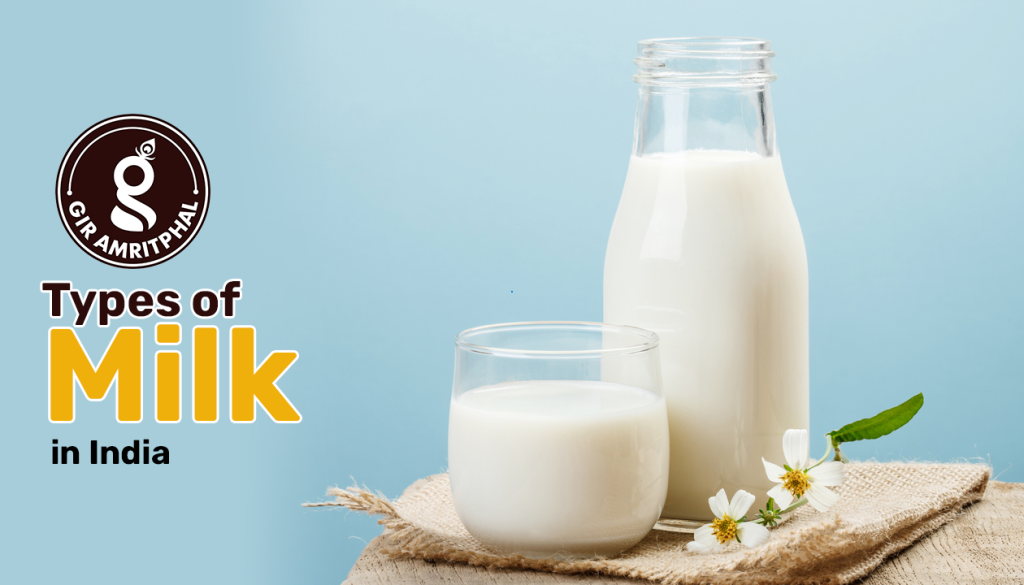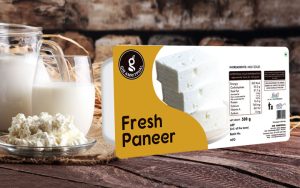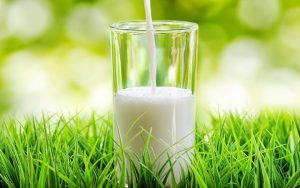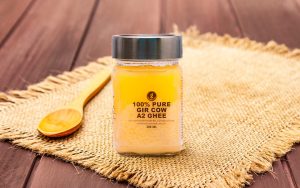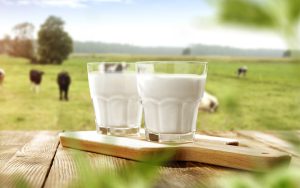Types of milk in India are as diverse as the country itself, reflecting the rich agricultural traditions and dietary preferences of its people.
Milk has been an essential part of the Indian diet for centuries. Revered in ancient texts and deeply ingrained in traditional culinary and health practices, milk is more than just a beverage in India—it is a symbol of nourishment, purity, and vitality.
With the country being one of the largest producers and consumers of milk in the world, it’s no surprise that there are various types of milk in India, each with unique nutritional values and cultural significance.
This article explores the diverse types of milk in India, their origins, benefits, and how they cater to different dietary needs and preferences.
Types of Milk in India
| Milk Type | Fat Content | Digestibility | Ideal Use |
| Cow | Low to Medium | Easy | Daily drinking, tea |
| Buffalo | High | Medium | Paneer, ghee, sweets |
| Goat | Medium | Very Easy | Sensitive stomachs |
| Camel | Low | Easy | Diabetics, immunity |
| A2 Cow | Medium | Very Easy | Kids, health buffs |
1. Cow Milk
Cow milk is the most widely consumed and recognized type of milk across India. It is considered sattvic (pure) in Ayurveda and is often used in religious rituals and offerings.
Key Features:
- Light and easy to digest.
- Rich in calcium, protein, and vitamins like B12 and D.
- Ideal for children, elderly, and those with a sensitive digestive system.
Cow milk is often recommended for daily consumption due to its well-balanced nutrient profile. Gir, Sahiwal, and Red Sindhi are some popular indigenous cow breeds known for high-quality milk production in India.
Perfect For: People seeking natural, chemical-free milk options or following a sattvic diet.
Pro Tip: Giramriphal’s A2 milk is an ideal daily wellness booster.
2. Buffalo Milk
Buffalo milk is another commonly consumed milk in India, especially in the northern states. Compared to cow milk, buffalo milk is thicker, creamier, and has a higher fat content.
Key Features:
- Rich in calcium, phosphorus, and magnesium.
- Contains more fat and protein than cow milk.
- Ideal for making dairy products like paneer, ghee, butter, and yogurt.
Though it is heavier to digest, buffalo milk is excellent for those who need more energy and muscle mass, like growing children and athletes.
Popular Use: Protein shakes, paneer, ghee for high-calorie diets.
Fun Fact: Did you know camel milk contains natural insulin-like proteins?
3. Goat Milk
Goat milk is slowly gaining popularity in India due to its unique nutritional benefits and digestibility. It is often recommended for individuals who are allergic or intolerant to cow or buffalo milk.
Key Features:
- Easier to digest due to smaller fat globules and less lactose.
- High in medium-chain fatty acids.
- Contains bioactive compounds that boost immunity.
Goat milk is particularly valued in natural and Ayurvedic remedies. It also contains A2 casein, making it more suitable for sensitive stomachs.
Best For: Those who experience bloating or heaviness from regular dairy.
Fun Fact: Goat milk is the closest to human milk in composition!
4. Camel Milk
Camel milk has been consumed traditionally by desert communities in Rajasthan and Gujarat. With the growing awareness of its health benefits, it is now being sold commercially in various cities.
Key Features:
- Rich in insulin-like proteins, making it beneficial for diabetics.
- Contains anti-inflammatory and antibacterial properties.
- Low in fat and cholesterol.
Camel milk is being researched for its potential benefits in autism management and immune system support. It is especially useful for people seeking alternative milk due to lactose intolerance.
Modern Use: Smoothies, supplements, or consumed raw (under expert guidance).
At Giramrit Phal, we source pure A2 milk from free-grazing Gir cows—delivered fresh to your door.
5. A2 Milk
A2 milk is derived from cows that produce only the A2 beta-casein protein, as opposed to the more common A1 and A2 combination. Indigenous Indian breeds like Gir Amritphal, Sahiwal, and Tharparkar naturally produce A2 milk.
Key Features:
- Easier to digest and less inflammatory than A1 milk.
- May reduce digestive discomfort and bloating.
- Rich in nutrients like Omega-3 fatty acids and antioxidants.
A2 milk is gaining popularity as a healthier alternative among health-conscious consumers. Many consider it to be the original and unadulterated form of cow milk.
If you’re considering incorporating A2 milk into your diet, read more about its health benefits in our detailed guide: Cow A2 Milk in a Healthy Diet.
6. Plant-Based Milk Alternatives
With the rise of veganism and lactose intolerance, plant-based milk alternatives are also becoming common in urban India. These are not technically dairy but serve as popular milk substitutes.
Common Plant-Based Milks:
- Soy Milk: High in protein, good for heart health.
- Almond Milk: Low calorie, rich in Vitamin E.
- Coconut Milk: Rich in healthy fats, used in coastal cuisine.
- Oat Milk: High in fiber, creamy in texture.
- Rice Milk: Easily digestible, hypoallergenic.
These alternatives are ideal for people with dairy allergies, vegans, or those looking to reduce their intake of animal-based products.
7. Yak Milk
Consumed mainly in the Himalayan regions like Ladakh and Sikkim, yak milk is rare but highly nutritious.
Key Features:
- Extremely high in fat and protein.
- Used to make traditional products like churpi (hard cheese).
- Provides warmth and energy in high-altitude, cold climates.
Yak milk is not commonly available in urban markets, but it is deeply valued in the regions where it is produced.
8. Sheep Milk
Though not very common in India, sheep milk is highly nutritious and used in making specialty cheeses like Roquefort and Feta.
Key Features:
- High in calcium and zinc.
- Contains more protein and fat than cow or goat milk.
- Creamy texture and rich taste.
Efforts are being made in some parts of India to explore sheep milk farming for niche dairy products.
Choosing the Right Type of Milk
When selecting from the various types of milk in India, it’s important to consider your nutritional needs, digestive capacity, and lifestyle. Here are some quick tips:
- Cow Milk: Great for daily consumption, especially for growing children and the elderly.
- Buffalo Milk: Ideal for energy-rich products like sweets and ghee.
- Goat and A2 Milk: Best for people with lactose sensitivity or weak digestion.
- Camel Milk: A good option for diabetic and autoimmune conditions.
- Plant-Based Milks: Suitable for vegans and those with dairy allergies.
Traditional Indian Milk Products
The diversity in milk types also leads to a wide range of traditional dairy products such as:
- Curd (Dahi) – made from cow or buffalo milk, used as a probiotic.
- Paneer – cottage cheese made from curdled milk.
- Ghee – clarified butter from buffalo or cow milk.
- Kheer – milk-based dessert with rice and dry fruits.
- Lassi and Buttermilk – fermented drinks that aid digestion.
These products are staples in Indian kitchens and vary in taste and texture depending on the milk used.
Final Thoughts
The variety of types of milk in India reflects the country’s agricultural diversity and deep-rooted food traditions. Whether you’re looking for a protein-rich drink, a gentle option for digestion, or a vegan alternative, there’s something for everyone.
As more consumers move toward conscious living, there is a growing interest in native Indian cow breeds, organic dairy, and ethically sourced milk. Platforms like Giramrit Phal aim to bring these rich traditions and healthier options back to your homes.
So, the next time you pour yourself a glass of milk, remember that it’s not just a beverage—it’s a journey through the diverse and nutritious world of Indian dairy.

